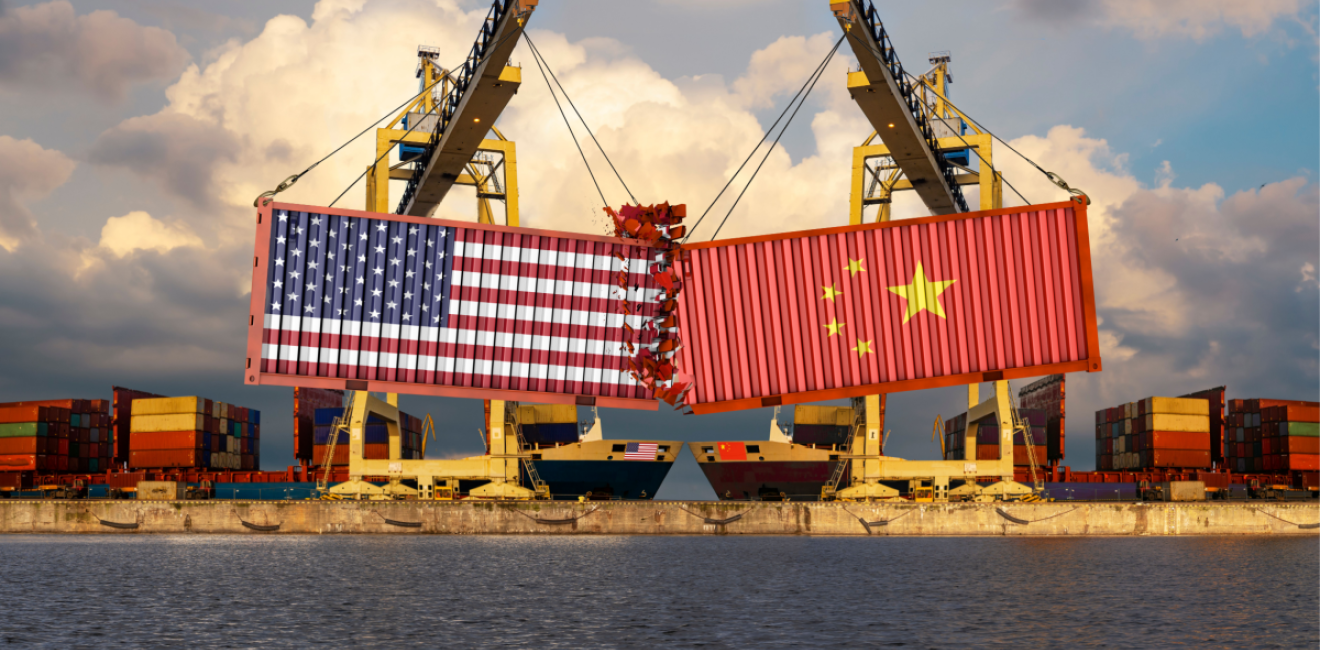Global trade is cracking, and it’s already worse than you think
Forget forecasts. The collapse is happening now, and the early data shows just how severe the damage already is.
It’s no longer theoretical. The global economy is now delivering hard evidence that the era of trade wars, tariffs, and strategic decoupling is triggering real-world consequences, fast.
While central banks continue to cite “uncertainty” as their excuse for doing nothing, the early data now streaming in paints a very different picture. It’s not just a downside risk anymore, it’s an unfolding reality. And the results aren’t just grim. In some sectors, they’re catastrophic.
Global trade hits an air pocket
Containerised trade, the backbone of the modern global supply chain, is experiencing a wave of cancellations. Following a front-loaded frenzy of exports at the end of last year and into Q1 of this year, activity has collapsed. The payback has arrived.
According to CNBC, U.S. importers are being notified en masse of cancelled sailings out of China, with 80 blank sailings already logged by just one freight company. Alan Murphy, CEO of Sea Intelligence, warns of a continued sharp drop: "We won’t go to zero containers, but we will see a decrease... and a massive raft of blank sailings”.
In fact, from late March to early April, container bookings plummeted:
Global container volumes: down 49%
U.S. imports: down 64%
U.S. exports: down 30%
China-to-U.S. shipments: down 64%
U.S.-to-China exports: down 36%
Textiles, apparel, and wool fabrics all dropped more than 50%.
This is not a blip. It’s a shockwave.
China’s artificial high and inevitable payback
China’s March data looked strong on the surface. Exports surged 12.4% year-over-year, helping to prop up GDP growth to 5.4%, but dig deeper and it’s all smoke and mirrors. Almost 40% of GDP growth came from net exports, the highest share in over a decade, thanks to rushed orders trying to beat incoming tariffs.
On the import side, the real economy in China looks far weaker: imports fell 4% in March after an 8% drop in January and February. The result? A massive trade surplus, but not due to healthy economic conditions. The “growth” was manufactured. And now, the payback has begun.
Factory activity is already being scaled back. Shifts are being cut. Work weeks are shrinking from six days to three or four in some areas. Even analysts at Citi and UBS are slashing growth forecasts to 4% or less, calling for urgent stimulus.
South Korea sends another warning
South Korea, arguably the most reliable bellwether of global trade, has seen its own export engine stall out. In the first 20 days of April, exports fell 5.2% year-over-year. That followed a +5.5% gain in March, showing just how dramatic the reversal has been in just one month.
Shipments to the U.S. dropped 14.3%; to China, down 3.4%. Though Korea picked up some gains in exports to Europe and Taiwan, this represents the start of a global deflationary snapback, everyone competing for the same shrinking pool of demand.
Worse still, auto tariffs pose an existential threat to Korea’s vehicle exports, nearly half of which go to the U.S. Already, the Bank of Korea has warned of a potential negative GDP print in Q1 2025, and is cutting its growth forecast even further, yet still refuses to cut interest rates, frozen by “uncertainty”.
The Baltic Dry Index confirms the trend
It’s not just container shipping that’s suffering. The Baltic Dry Index, which measures the cost of shipping raw materials like coal, iron ore, and grain, is well below last year’s levels. At 1,261, it’s over 600 points lower than the same point in 2024. This means global demand for raw inputs is evaporating, hardly a sign of a resilient economy.
The U.S. is not insulated
The belief that America’s economy can escape the fallout is quickly being shattered. The Conference Board’s Leading Economic Index (LEI) fell 0.7% in March, following a 0.2% drop in February. Over the past six months, the LEI is down 1.2%.
This reflects weakening stock prices, crashing consumer expectations, and plunging manufacturing orders.
Take the Philadelphia Fed’s manufacturing survey:
January new orders index: +42.9
April new orders index: –34.2
That’s a 75-point collapse in just three months. The artificial highs from early-year frontloading are gone. We’re now seeing what the actual economy looks like on the other side, and it’s not good.
Fragility is the theme
What’s becoming undeniable is the fragility of the global system. The so-called “strong and resilient” economy narrative has always ignored the distortions, first from lockdowns, then from stimulus, and now from tariffs and trade disruptions.
We’re seeing a global economy front-loaded and hollowed out. The early returns from April show us a world not teetering on the edge, but one already stepping into the downturn.
From China and South Korea to the U.S. and Europe, the early data says this isn’t just a downturn. This could be the start of the worst-case scenario.


